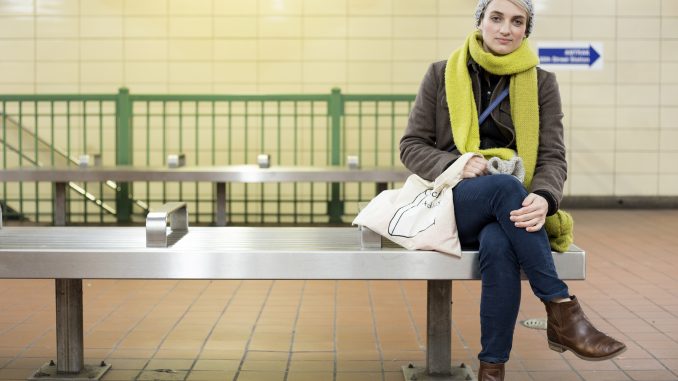
During her time at the Pennsylvania juvenile correctional facility VisionQuest, Jessie Hemmons learned to crochet because none of the other girls would talk to her.
“Finally they gave us crochet hooks and yarn,” Hemmons said. “I was desperate. I begged these girls to teach me.”
Crocheting, she said, was an effective form of nonverbal communication when “all other forms had failed” while she was in the facility. Her time at VisionQuest was an important experience teaching her yarn and crochet could be an effective way to interact, Hemmons said.
Hemmons said she has seen crocheting “bring people together in a way that verbal communication” could not. This experience led her to believe that yarnbombing had the potential to “bring Philadelphia together.”
“[VisionQuest] changed my framework for life,” she added. “Not that I have any idea what it’s like to be a minority, but I got a tiny taste of what it feels like to be isolated in a situation and I think it was an important experience for me to have coming out of an environment where I’m of the majority.”
Today, Hemmons is better known around Philadelphia as Ishknits. A self-proclaimed “craft-ivist” and yarnbomber, she creates a style of street art that involves yarn instead of spray paint. Her work has been featured on TIME Magazine’s website and local street art blog, Streets Dept.
“[Hemmons] first reached out to me through email,” said Conrad Benner, founder and editor of Streets Dept. “I didn’t even know what [yarnbombing] meant. I had to Google it. Until that point, yarnbombing was generally a wrap around a tree or a pole. She took it to a completely different level.”

Hemmons’ first piece was on a bike rack near 16th and Market streets, and she still remembers being nervous, despite having read a street art book which listed excuses to use if an artist is stopped while completing their piece.
The book even detailed crochet patterns for masks, “if you wanted to be real incognito,” she said. Hemmons completed the installation as quickly as she possibly could.
“My hand was shaking,” she said. “I finally got it on, and I ran away. I think I walked by an hour later and it was still there.”
From there, Hemmons quickly became a breakout sensation, Benner said, in the “male-dominated art form” of Philly’s street art. She’s particularly known for her large-scale pieces that often question social norms. Her most recent project, a nine-foot tall banner reading “feel the BERN,” is a nod to presidential candidate Bernie Sanders. The piece hangs over the Reading Viaduct on Spring Garden Street between 10th and 11th.
Despite her own status, Hemmons believes “anyone can be an artist.” She even taught an online class through Skillshare, a worldwide online learning forum that uses industry experts to instruct students in the creative arts, design and entrepreneurship fields.
“Jessie’s class was a series of lessons that talked about how to yarnbomb,” said Ally Kraus, one of Hemmons’ students. “It took a lot of confidence. I was hesitant about getting started. It was nice to have her reassurance. It really pushed me to put a yarnbomb out there.”
Hemmons wishes to expand her reach, noting that she doesn’t put her work in certain communities because of her fear of forcing her work on people. She hopes to incorporate residents of North Philadelphia into community yarnbombs in the future.
“I consider race and white privilege a lot,” Hemmons said.
“She’s way more humble than she should be,” Benner said. “I think Jessie is very open. … I think she helped change the idea of what a street artist is. She is using the platform to bring up a lot of important issues.”
Hemmons believes the whole point of public art is for it to “belong to the city.”
“So whatever they do with it is what they do with it,” she said. “It’s this idea of taking advantage of public space. I’m taking advantage of public space to put this piece up. Now you take advantage of public space and do what you want with it.”
Erin Blewett can be reached at erin.clare.blewett@temple.edu.
Video by Patrick Clark.


Be the first to comment